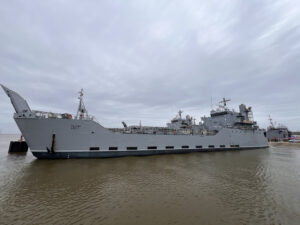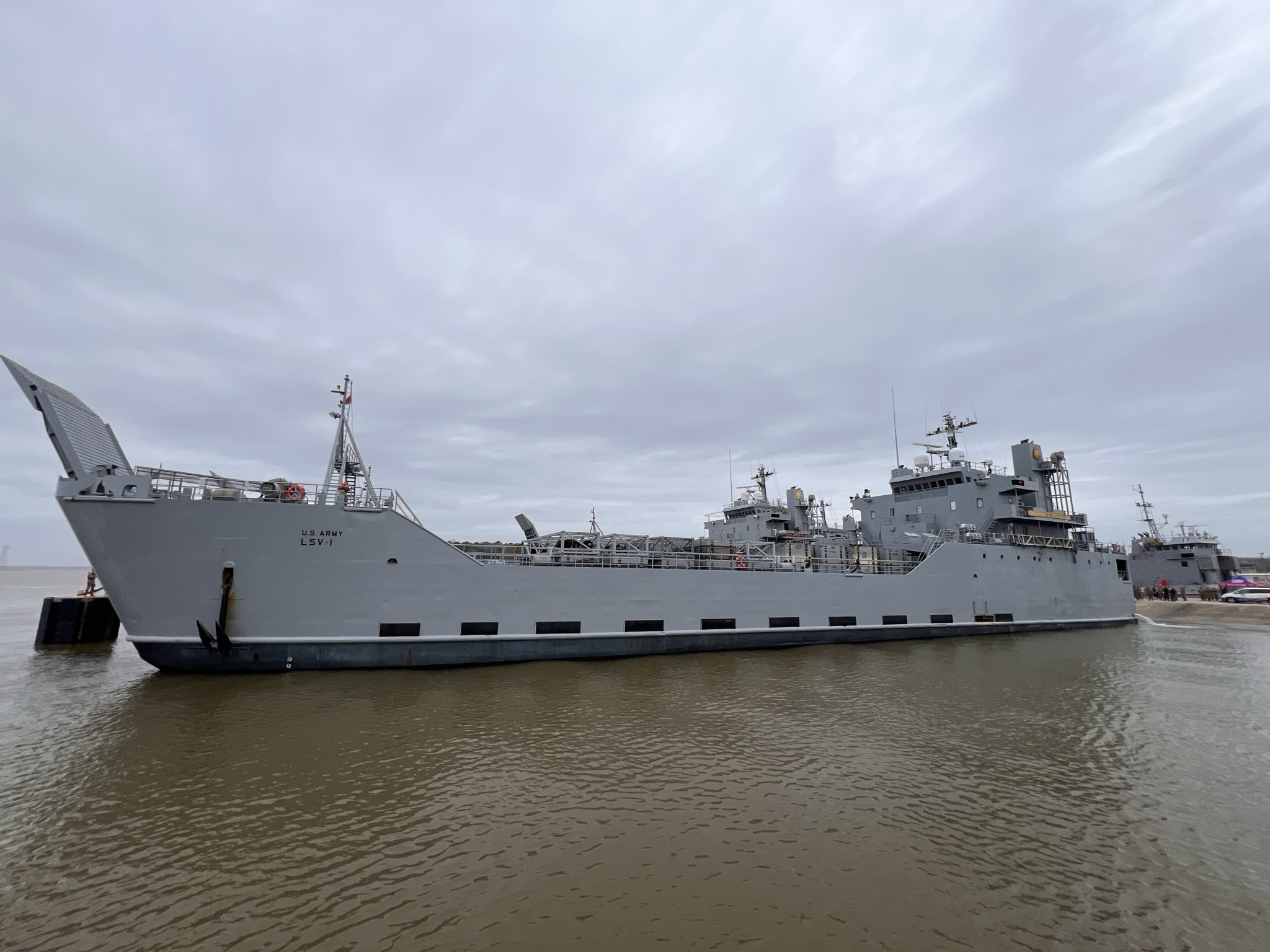The Navy earlier this month posted a presolicitation notice that it intends to issue Bollinger Shipyards Lockport LLC a sole-source contract for the first Landing Ship Medium (LSM) based on an Israeli ship design.
In the April 7 notice, Naval Sea Systems Command (NAVSEA) said it intends to give Bollinger a solicitation to construct the lead LSM Block 1 ship as its commercial/non-developmental Israeli Logistics Support Vessel (ILSV) design.

This upcoming sole source contract is allowed because the National Defense Authorization Act of 2025 specifically exempted the Navy from using a full and open competition for the lead LSM if it chose a commercial or non-developmental design.
That provision originated with the Senate Armed Services Committee’s version of the bill, authorizing the Navy to enter into an agreement to procure, lease or charter commercial or non-developmental “ship that meets core U.S. Marine Corps requirements for operational sealift and landing troops, equipment, and supplies to a beach” (Defense Daily, July 11, 2024).
Bollinger delivered two ILSVs to the Israeli Navy in 2023 and 2024, based on the U.S. Army’s Frank S. Besson-class of logistics support vessels. The ILSVs are 312 feet long, can operate on beaches as low as under 4 feet deep while carrying over 900 tons of equipment, can travel at upward of 14 knots and have a range of over 6,500 nautical miles.
That allowance came after significant Navy wrangling with the original LSM idea planned to be late to the need for Marine Littoral Regiment campaigning. Lawmakers wanted to make sure the Marine Corps had some capability to start with, aside from the leased HOS Resolution, a modified Hornbeck Offshore Services Offshore Support Vessel used to test LSM concepts as a Stern Landing Vessel (SLV).
The SLV and Spearhead-class expeditionary fast transport ships have been used to test LSM concepts as Littoral Maneuver Bridging Solutions (LMBS) vessels.
In January 2024, the Navy issued its initial Request For Proposals (RFP) for the detail design and construction of six LSMs while the budget planned to procure the first one in FY 2025 (Defense Daily, Jan. 11, 2024).
However, later last year a Congressional Budget Office report argued the LSM would likely be two to three times more expensive than the Navy’s planned estimate of $150 million per hull due to adding military survivability specifications to a commercial baseline hull (Defense Daily, April 12, 2024).
Then, last December former Assistant Secretary of the Navy for research, development and acquisition Nickolas Guertin confirmed the Navy’s cost estimates were indeed far off and they pulled the LSM RFP due to high industry price tags (Defense Daily, Dec. 19, 2024).
Guertin had said the Navy thought it had a bulletproof cost estimate given its requirements, but the RFP led to “a much higher price tag, and we simply weren’t able to pull it off.”
The Marine Corps ultimately wants 35 LSM-type ships to transport the Marine Littoral Regiment, but it and the Navy have settled on at least 18 vessels initially.
In 2023, a Marine Corps official said the 19th through 35th vessels might not be the original LSM concepts, but could include other vessels with similar capabilities, like LMBS vessels (Defense Daily, Jan. 17, 2023).
In January, the Navy started the new process through a Request for Information to determine commercial availability for non-developmental landing ships available at U.S. shipyards. Non-developmental vessels are complete ship designs that have moved past functional design and are under contract to be built or were previously built (Defense Daily, Jan. 8).
At the time, the Navy said it wanted the landing ship to have a cargo capacity of at least 300 short tons and be under 400 feet long.
